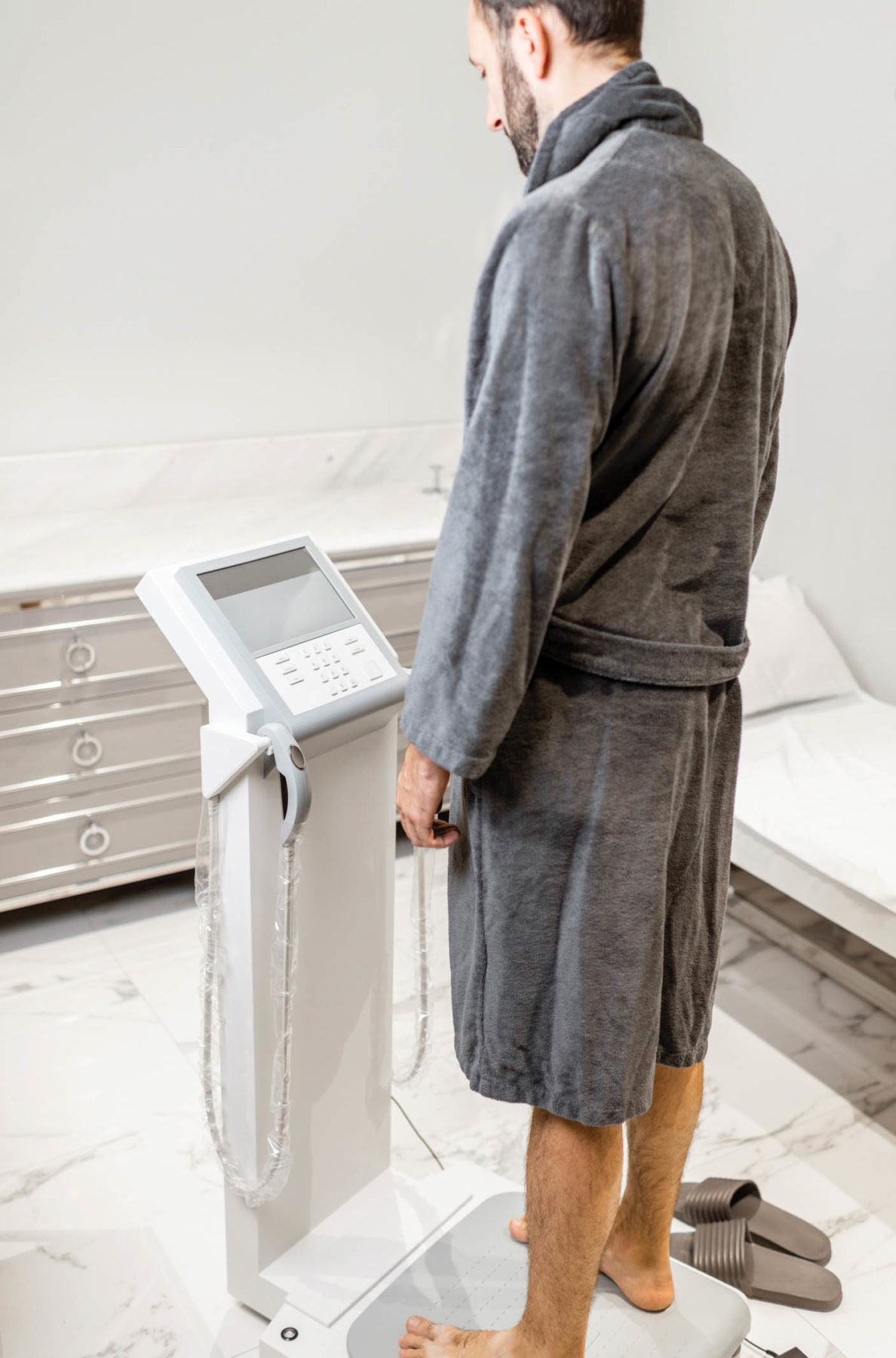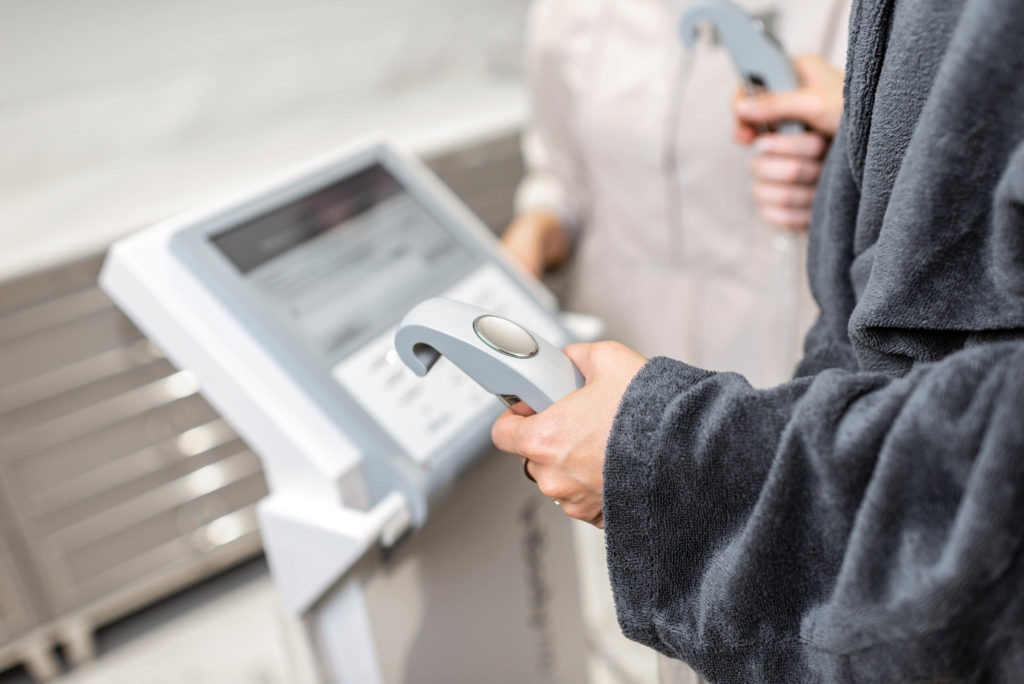Everything You Need to Know About InBody Scans

Understanding your body is crucial to maintaining your health. The InBody Scan, which uses bioelectrical impedance to measure our muscle and fat mass, is one of the ways we can get a better understanding of our body composition. The Scan is meant to answer questions like are you gaining muscle or losing fat, and from where do those numbers on the scale come?
Though the DEXA Scan is the clinical ”gold standard” for measuring fat, muscle and bone density, it can be expensive and not readily available. However, the InBody Scan has proven to be nearly as accurate, easier to schedule and inexpensive.
It’s important to know how the InBody Scan works to sufficiently meet your health needs and see improvements over time.
Total Body Water, Dry Lean Mass, Body Fat Mass
Start with the information found at the top of the InBody results. The machine will measure total body water because fat doesn’t absorb water like muscle does. Therefore, the higher amount of skeletal muscle mass indicates the higher amount of body water, which shows the importance of hydration!
This showcases how much muscle versus fat is in your body. It will sum your body fat, lean mass and total body water. This value should equal your total weight.
Body Composition Analysis

The body composition analysis compares you to your demographic.
There are three categories on this chart – under, normal and over. These respectively indicate where you fall in relation to your demographic’s average body composition.
Types of Distribution
There are three types of distributions:
C-Shape: Weight and body fat mass are slightly greater compared to the middle number.
I-Shape: All three numbers of the above mentioned category line up.
D-Shape: The skeletal muscle mass is greater than your weight or body fat mass. This is considered the healthiest and strongest type of body.
A D-Shape result is definitely achievable with the proper guidance and information.
Obesity Analysis
The obesity analysis covers BMI and percentage of body fat. For BMI, anything between 20 and 25 is considered normal, 25 to 30 is overweight, and anything over 30 is obese, but these are just general categories and not specific to individuals.
Please understand that women naturally have more body fat and need more body fat for proper hormonal regulation, so don’t obsess too much over this number if you fall above 30%.
Segmental Lean Analysis
The segmental lean analysis gives a better understanding of how your lean mass or skeletal muscle mass is on your body.
InBody compares the right versus left arm and the right versus left leg. Anything greater than a pound of difference between one side versus the other typically indicates a previous injury.
This number helps you understand how to achieve balance in your body. Knowing this value can help a physical trainer determine specific exercises to help the side of your body with less muscle mass. Achieving balance is important for many reasons but, most importantly, to help prevent future injuries.
Body Fat and Lean Body Mass Calculator
The body fat and lean body mass calculator is a helpful tool because it provides a roadmap to help your values fall within a normal range. InBody will estimate if you need to lose a certain amount of body fat, gain a certain amount of muscle, or a little bit of both. This will help you determine your goal number.
Basal Metabolic Rate
The basal metabolic rate measures the calories burned while at complete rest for 24 hours.
For example, if yours is 1,747 and you were to consume more than 1,747 calories on a consistent basis, you may gain weight over time. If you were to eat less than that number without exercise, then you will consistently lose weight over time.
If you exercise, that number will increase. If you burn 400 calories while you’re on the Peloton, you can then create a deficit of 400 calories, which would only accelerate your weight loss goal.
This is a great tool to understand your exercise regimen and whether you want to gain muscle or lose body fat. Also, from a nutrition perspective, it is equally important to take note of the scale as it is to ensure you are eating healthy.
How often?
Don’t make the mistake of testing daily or even weekly. Your body changes daily depending on your workouts, hydration level, hormones and other factors. Be consistent, though. If you test fasted in the morning before a workout, then schedule your next test in four to six weeks with these exact parameters.
About the Author

Jessica Tranchina, PT, DPT, is a co-founder of Generator Athlete Lab and has been an athlete her whole life. As the creator of the Generator Method, Tranchina works to help guide others to better performance and recovery and is passionate about bringing the active community of Austin together from all fitness levels and athletic backgrounds. She is the owner of PRIMO Performance and Rehabilitation, started in Austin in 2010, where her expertise and unique skill set have been established as one of the best in her field. NASM-CPT, ART Certified Provider, CKTP.






